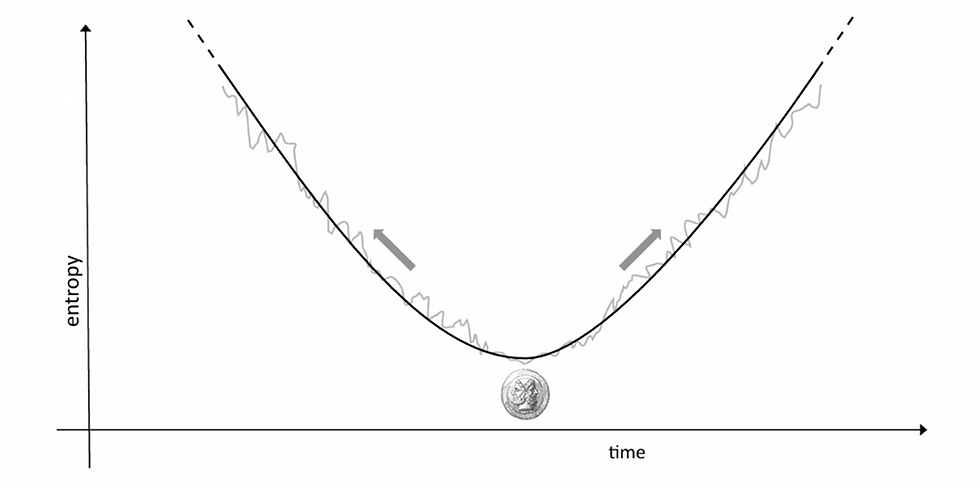Apples Falling Everywhere: Some Basic Physics Definitions
- JYP Admin

- Sep 4, 2020
- 4 min read
Updated: Nov 4, 2023
Author: Parmin Sedigh

We all know the story. Newton was sitting under a tree, an apple fell and hit him on the head, he discovered gravity, end of story. Well, it’s not quite so simple. In this post, we’re gonna dig a little deeper into the basics of physics and what really caused that apple to fall down and change the course of physics and science in general as we know it.
The first thing I want to clear up is whether this story, which may be the most famous of all in the science field, is just a myth. According to the Memoirs of Sir Isaac Newton’s life, by William Stukeley, which can be found here [courtesy of The Royal Society], this story was in fact mostly true. Although Newton did not just realize the force of gravity after one apple falling and hitting him on the head, he did indeed sit underneath a tree, pondering about “the notion of gravitation [... which] was occasion’d by the fall of an apple.”
Now onto the physics! So we know that gravity is the force that keeps us and all our objects from flying away. It’s the reason why you don’t just float away when you jump on Earth. Although we think of gravity as this great force, it is the weakest of the four fundamental forces, (which includes gravity itself, electromagnetism and the strong and weak nuclear forces). Before going any further, let’s get some definitions down.
First, it’s important to differentiate between mass and weight. Mass is how much matter makes up an object and it’s consistent no matter where you are in the universe. On the other hand, weight depends on the gravitational pull of the objects involved. For instance, on Earth, to find the weight of an object, you must multiply its mass in kilograms by 9.8 m/s^2. This 9.8 doesn’t come from nowhere. It’s the acceleration an object feels due to the gravitational field of the Earth. Let’s use an example. The average North American female mass is about 81 kilograms. This is the same on Earth as well as on Jupiter. However, on Earth the average woman would weigh about 794 newtons, while on Jupiter she would weigh about 2008 newtons (due to its greater gravitational pull).
The last definitions I want to go through is velocity. Similar to weight and mass, speed and velocity are often used interchangeably. Yet, they are not the same thing. Speed is scalar, meaning it only specifies distance and time, and not vector, which means it doesn't depend on direction. This is while velocity involves direction, or vector. The Physics Classroom puts it well when they say “velocity is the rate at which the position changes.” It’s time for another example. Let’s imagine you are taking the train from City A to City B, where City B is north of City A. The train travels for one hour to get to City B and the distance it travels is 90 km. Its speed is 90 km/hour. Its velocity can be described as 90 km/hour due north. Now let’s imagine that this is a round trip and you fall asleep on the train. You end up back at City A. You’ve just gone in a loop, but your speed is still the same. However, your velocity is zero since you haven’t moved positions. Refer to figure 1 below to better understand what I’m talking about. And watch this video for a short but super useful explanation of this difference.

Now that we have those definitions down let’s get to some even more interesting facts. It’s also good to remember that gravitational pull is present between any two objects with mass. This means that you and the device you’re reading this on are both attracted to each other, but the force is so small that you don’t feel it. Also, as objects fall for a longer period of time, their velocity accelerates. So when a rock is falling for a few seconds, its velocity keeps increasing as those seconds tick by.
From apples falling to the theory of relativity, you need to start small and learn little-by-little. Hopefully this post helped you get a little closer to solving the biggest physics problems in the future!
Resources
Allain, Rhett. “For the Last Time: The Difference Between Weight and Mass”. Wired, 18
October 2018,
Badzilla. “The Difference Between Speed & Velocity”. YouTube, 16 August 2015,
Friedl, Sarah. “Mass and Weight: Differences and Calculations”. Study.com, 6 February 2014,
Gefter, Amanda. “Newton's apple: The real story”. NewScientist, 18 January 2010,
Mann, Adam. “What is gravity?”. LiveScience, 13 May 2020,
Moore, Keith. “Newton’s apple tree”. The Royal Society, 22 February 2012,
Plait, Phil. “The Gravity of the Situation”. YouTube, 26 February 2015,
SensorsONE. “Mass to Weight Calculator”. SensorsONE, n.d.,
The Physics Classroom. “Speed versus Velocity”. The Physics Classroom, 2020,
Wessels, Dan. “What is the average weight for women?”. MedicalNewsToday, 8 January 2020,
William Stukeley. “Memoirs of Sir Isaac Newton’s life. The Royal Society, 2010,

.png)




Comments